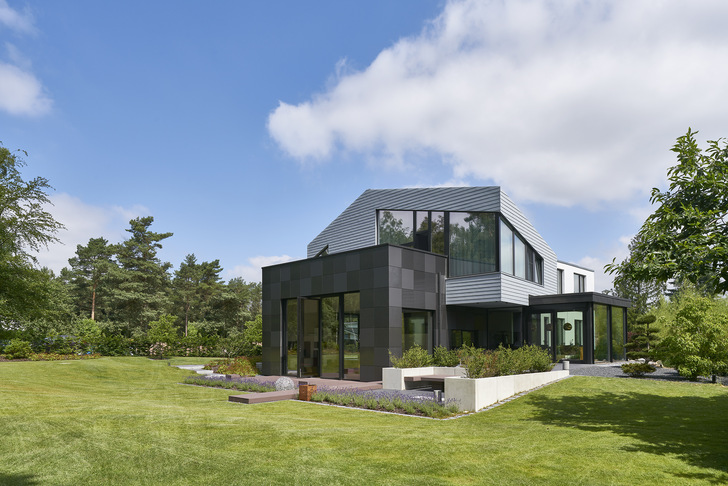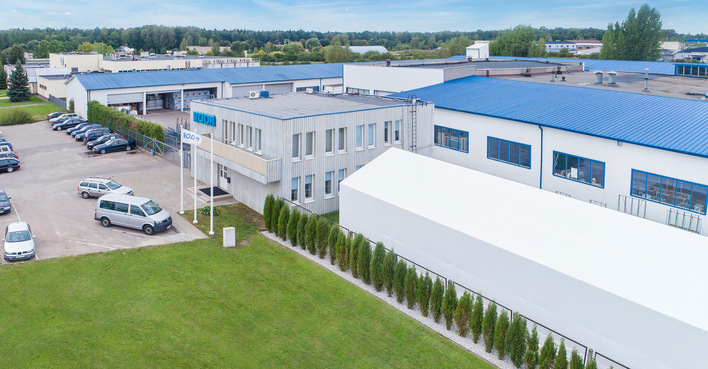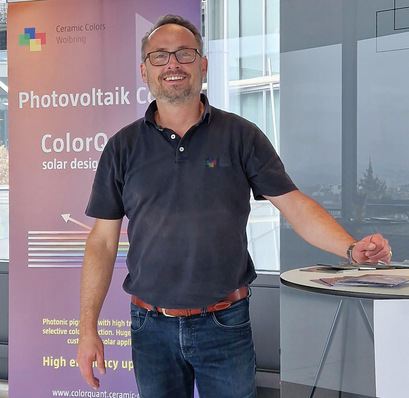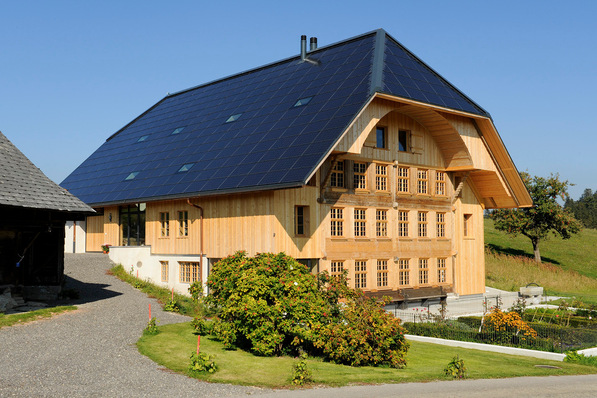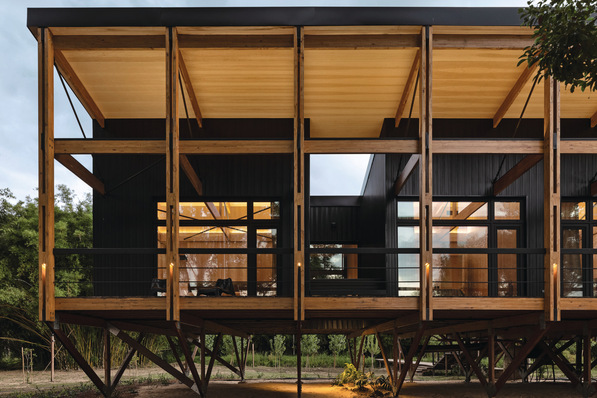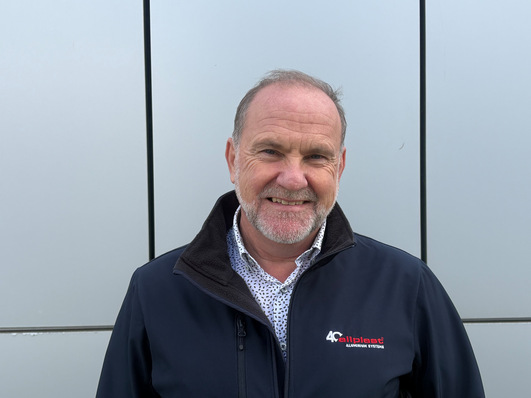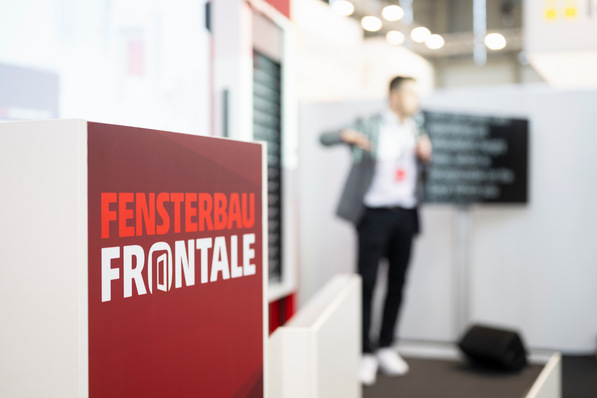The interior of this modern family home, located south of Hamburg in northern Germany, is characterised by open, light-flooded and high rooms. A functional separation of the individual areas by form and material has been deliberately made visible from the outside. The result is a building that is a playful and not always orthogonal – which is exactly how the young family who commissioned it wanted it to be.
Living area, dining and cooking area, parents' area, children's area and the garage are accommodated in different, formally differentiated cubes and are united in the middle by a glass facade. The entrance area is covered by the parents' house, which is clad in pre-weathered zinc. It is characterised by its sloping roof and light openings adapted to the shape of the roof, which give this space a floating feeling above the entrance.
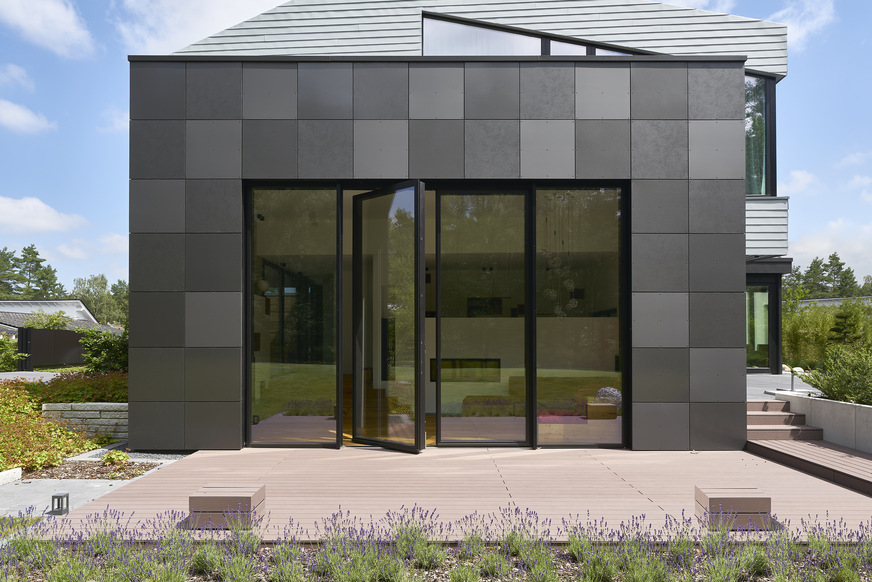
Schüco International KG / Andreas Weiss, Hamburg
The open hallway, by which one enters the building, leads directly into the large cooking and dining area, separated by a steel and glass door. Here, the view is directed through the building into the garden. Flowing sight lines are accompanied here by functional transitions. Thus, the modern kitchen block develops seamlessly into a spacious dining table, which was custom-made to fit the house. To one side of the entrance is the living area, opposite is the guest area and access to the wood-panelled garage.
In front of the living and dining area, but with an open cover, there is a library with a fireplace that can be used from both sides and forms the centre of the entire living space. A sculptural staircase leads upstairs directly to an open gallery with bar and pool table. The children's wing, which is located above the guest area, consists of three rooms and a separate bathroom. This sector of the house is denoted on the outside by the white plaster facade. On the other side, in the asymmetrical cube, is the parents' area, equipped with bedroom, dressing room, bathroom and an open second level as office and work area, accessible via a simple concrete staircase.
See also this article:
Villa Melstokke in Norway with clear views over the Fjord
The lowered living area, in the facade clad with square Trespa panels in two shades of anthracite, is characterised by its spectacular room height of five meters. This extraordinary spatial effect is matched by the light opening to the terrace and the forest behind the house. This is a 6.05 x 4.20 metre steel facade element in mullion-transom construction. Based around a VISS 50 system, it consists of four segments with identical dimensions. A four metre high double-leaf revolving door is integrated in the centre of the element, which provides barrier-free access to the terrace. The architect deliberately chose a post and rail construction in steel profile design, as only in this way was it possible to realise the desired field dimensions free of crossbars.
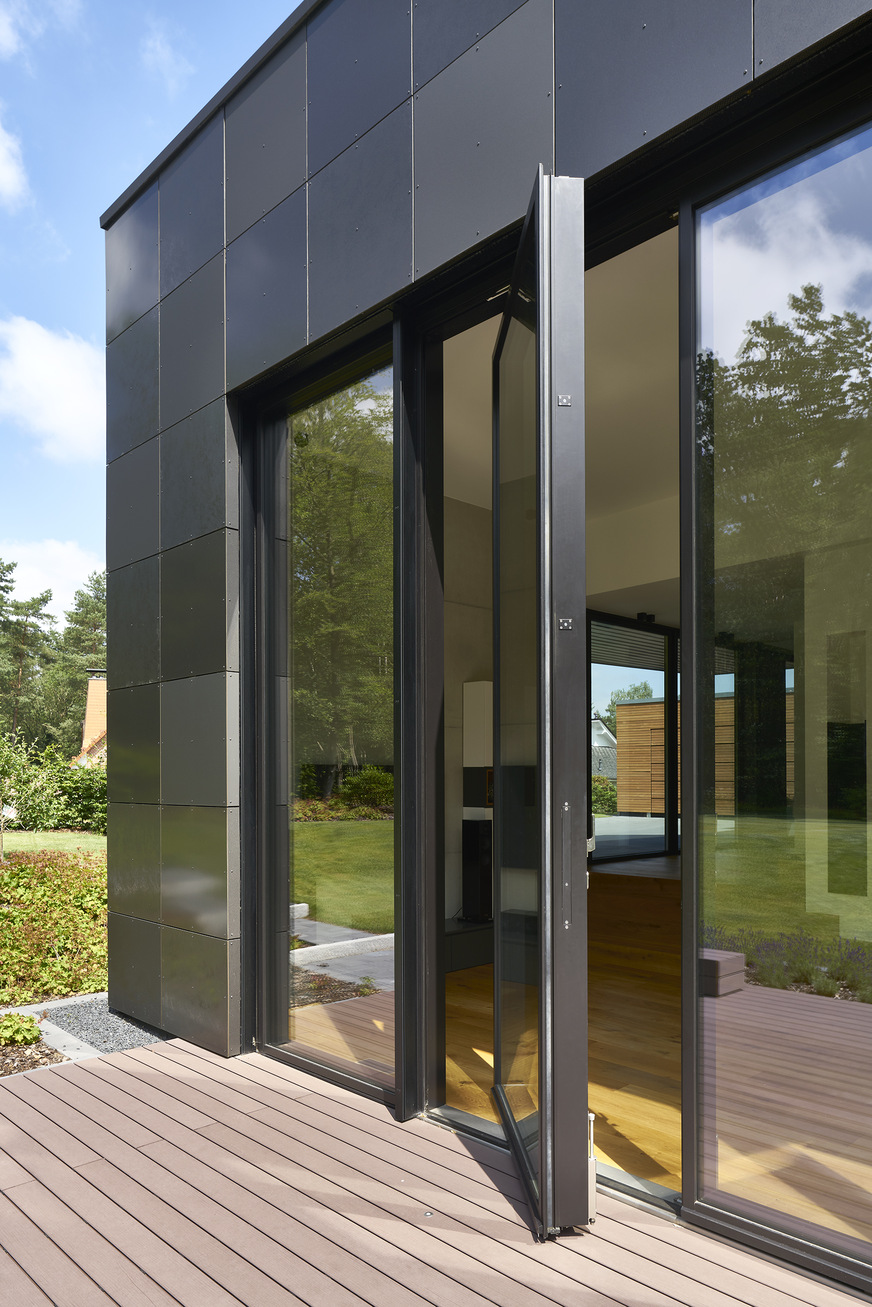
Schüco International KG / Andreas Weiss, Hamburg
When manufacturing the VISS 50 facade element, the company Langer Metallbau GmbH crossed the line into bespoke fitting. With the dimensions mentioned and a total weight of around two tons, this is probably the only system element in Germany of similar size and proportions. The excellent structural and energy properties of the system enable the integration of movable segments with profile face widths of as little as 50 millimetres, even using heavy multi-functional triple-shell construction glass. Precision manufacturing by laser cutting helps to almost completely eliminate heat and cold bridges, which is reflected in the U-value of 1.15 W/m²K. Added to this is an aesthetic appearance with tight edge radii and precisely fitting profile transitions.
Also from Schüco:
A fire protection system for maximum flexibility in operation
Transparency and the greatest possible natural incidence of light were very important to the clients. The use of highly insulated, extensively glazed elements is in keeping with the building's sustainable, resource-saving energy concept, which is heated by a salt-water heat pump and has a controlled ventilation system.







